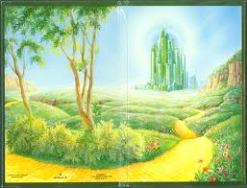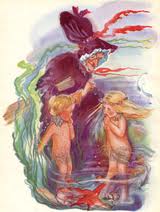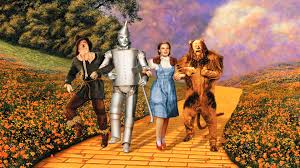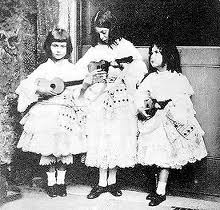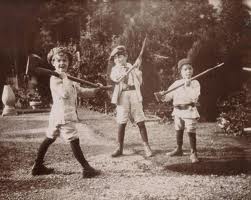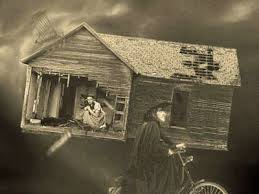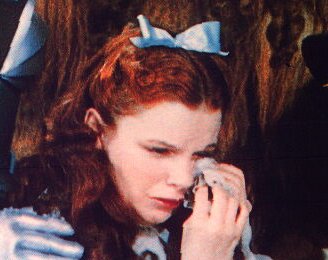For my final paper, I will be investigating the role of the classic aesthetic in contemporary children’s books. Over the past two to three years there has been a trend that has developed in the children’s book market. There has been a calling back on the classic, specifically the Golden Age classic. However, the trend has had two veins of creativity. On one side, we have what I would call an imitation of the classic while on the other side we have sparks of invention taking place that allude to the classic.
The imitation side of this trend is manifested with a plethora of “authorized sequels” such as Peter Pan in Scarlet, Return to the Hundred Acre Woods, and The Further Tale of Peter Rabbit.



Specifically in these authorized sequels, there is no invention taking place, meaning these authors are not creating new stories which recall the classic aethestic. Instead they are slipping back into the past, attempting to recreate the specific style, tone and feel of books that are recognized as classics. In 2009, NPR published an article looking at the authorized Winnie the Pooh sequel. It started out with the sentence: “It used to be that all good things would come to an end, but these days, at least in the world of books and movies, there is always ‘the sequel’.” It went on to discuss the new novel, and in writing the article they contacted children’s literature professor, Phil Nel. His opinion on the book was very telling and plays into what I believe is at the heart of the imitation vs. invention distinction at the heart of the classical style trend:
But Philip Nel, a professor of children’s literature at Kansas State University, says based on what he could glean from the first chapter, they may have played it too safe.
“It’s almost like reading someone else’s memory of A.A. Milne and E.H. Shepard,” says Nel. “It’s a pleasant memory, but why wouldn’t you read the original? It’s not like they’ve disappeared.”
The result, says Nel, is a book that feels like an imitation: “They’ve got the characters down. Pooh is ruled by [his] tummy. Piglet is timid. Eeyore tends to be sarcastic and depressed.”
Thus while you have these texts which attempt to actually imitate the classic and continue to keep an already written story alive, you have other authors that have been heavily inspired, have done their research on this period, but are creating inventive, unique and new worlds that recall the classic in style, tone and feel instead of imitating those three things. Some books that could be used as examples of this inventive vein in the trend are: Peter Nimble and His Fantastic Eyes, The Incorrigible Children of Ashton Place, The Girl Who Circumnavigated Fairyland in a Ship of her Own Making, and Splendors & Glooms.





Let’s take Peter Nimble as our example to investigate here what this inventive strain is doing. Merely in its title we have the name Peter which may automatically bring to mind Peter Pan, and we start to impose his characteristics onto Peter Nimble. The cover art is interesting to look at as well. The cityscape recalls London (similar to these covers of Peter Pan, click here , here , here , here and here), with the clock tower and the smoke stacks that set it in a Industrial Revolution period. We realize from the cover that Peter is blind and he must also be a thief, so perhaps we start to think about Oliver Twist. Lastly the juxtaposition of the cityscape and the fantastical background remind me a bit of Arthur Rackham who often juxtaposed the mundane with the magical. This novel also utilizes the second person address for its narrative, which is a bit of a staple with Golden Age authors, as we’ve seen with Barrie and Carroll. Lastly, as you read the text you begin to pick up on so many allusions that the author, Jonathan Auxier, melds together with his story to bring it to life, allusions include Peter Pan, Alice in Wonderland, The Wizard of Oz, the figure of the knight, Don Quixote, the figure of the pirate but one that is midway between the realistic and stylized, Oliver Twist, and the biblical story of Moses.
Lastly, with these ideas of the distinction between imitation and invention, I will also be looking at the role that nostalgia plays in all of this. Specifically it’s been really interesting to find Svetlana Boym’s definition of the idea of nostalgia. She actually breaks it up into two forms, one called restorative nostalgia and the other reflective nostalgia. These two distinctions actually work perfectly with the imitation vs invention idea that I’m developing for this classical trend. Restorative nostalgia attempts to reach back in time and restore the past in the present, which is what the imitation, “authorized sequels” are doing. On the other hand, reflective nostalgia looks back on the past, but realizes that it is impossible to really recreate the past and in doing so it is critical of this longing and is interested in the “contradictions of modernity” (Boym xviii). Thus this reflective nostalgia correlates rather well with the inventive side, because these authors are indeed looking back, but they are not attempting to restore something that is past, but instead create something new that fuses together a past aesthetic with a modern sensibility.
Cited:
Boym, Svetlana. The Future of Nostalgia. New York: Basic, 2001.
Neary, Lynn. “Pooh Faithful Return To The Hundred Acre Wood.” NPR. NPR, 02 Oct. 2009. Web. < http://www.npr.org/2009/10/02/113406207/pooh-faithful- return-to-the-hundred-acre-wood >.










